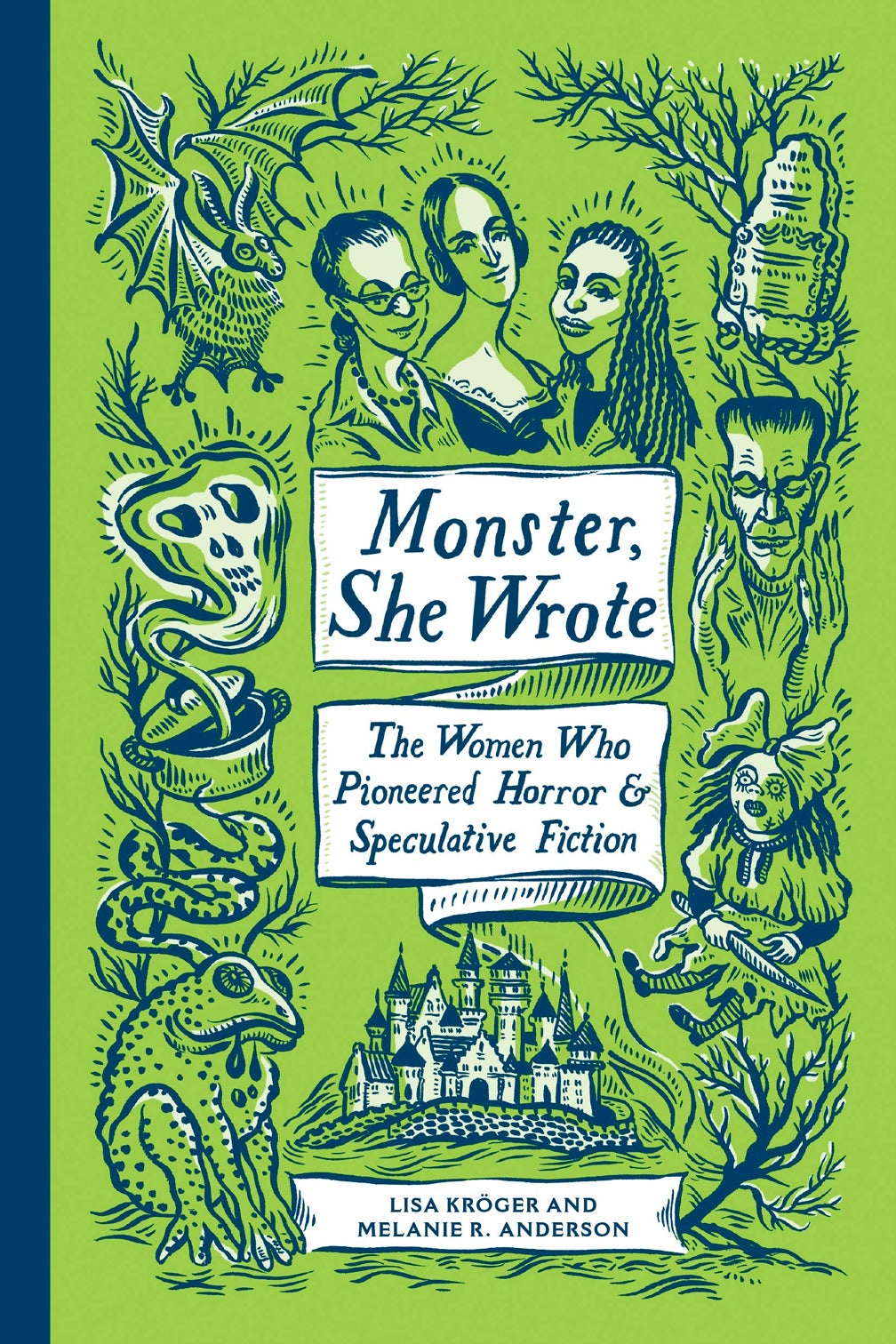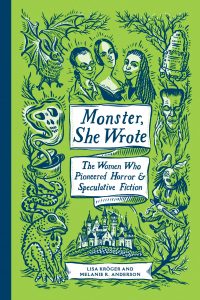
“Monster, She Wrote” by Lisa Kröger and Melanie R. Anderson
For many people, when we think of horror and thriller novels, we think of authors like Stephen King, H.P. Lovecraft, Bram Stoker and Edgar Allan Poe — male authors who have helped shape the genre in terrifying ways. “Monster, She Wrote: The Women Who Pioneered Horror and Speculative Fiction,” a nonfiction book written by Lisa Kröger and Melanie R. Anderson, reminds the reader of the fantastic female writers who worked alongside their male counterparts, often influencing them and the genre as a whole.
Take, for example, Margaret “Mad Madge” Cavendish, who wrote the science fiction novel “The Blazing World” more than 200 years before “Dracula” was published. Cavendish was infamous in her time and cultivated a celebrity status that prompted the diarist Samuel Pepys to call her “mad, conceited and ridiculous.” She also published philosophical treatises, created a literary feminist utopia and potentially published the first alternative reality fantasy novel.
“Monster, She Wrote” is full of short three to five page summaries of dozens of such women writers. Each summary contains biographical information about the woman, summaries of some of their most famous or emblematic works and suggestions about which of their books to read and authors or books similar in style.
The summaries are divided into eight sections broadly detailing the “founding mothers” of horror, Gothic tales, pulps, paperbacks, new Gothic writers, and the future of horror and speculative fiction, among other topics, and are beautifully decorated with small black and green illustrations.
“Monster, She Wrote” has a little of something for everyone. Readers who enjoy more classical or famous writers can learn a bit more about Mary Shelley, Shirley Jackson and Anne Rice’s work, while those looking for less well-known writers can discover the melodramatic works of Regina Maria Roche, the haunting tales of Amelia Edwards or the incredibly imaginative works of Pauline E. Hopkins.
For readers who enjoyed the pulps of the mid-20th century, they can rediscover the spine-tingling — and often camp — titles of space vamp queen Catherine Lucille Moore, the Southern Gothic Mary Elizabeth Counselman and the weird Wild Westerner Eli Colter.
And, of course, if you’re hoping to find horror and speculative fiction writers that are a bit more modern, you’ll appreciate learning about the teller of feminist fairy tales Helen Oyeyemi, Afrofuturist horrorist Jewelle Gomez and dozens of other writers mentioned in the future of horror and speculative fiction section.
As we plan our 2020 reading lists and goals, now is the perfect time to pick up “Monster, She Wrote.” Not only will you find a curated list of dozens of writers and works to choose from, but you might just receive that much-needed motivation to get back into reading. While you may choose to skim this book, preferring to cozy up with one of the works mentioned within instead, you’ll nevertheless be glad you gave it a look. Your to-read list will thank you.
— Reviewed by Cindy Butor, Patron Services Associate, Paul Sawyier Public Library
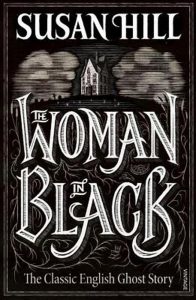
“The Woman in Black” by Susan Hill
When a thick fog and bone-chilling cold settles over London, up and coming young lawyer Arthur Kripps is happy to accept an assignment to attend the funeral of his firm’s client, Mrs. Drablow, and to sort through her papers in order to settle the estate.
In fact, he anticipates it will be a bit of a holiday and is happy to get away from his everyday routine. At Mrs. Drablow’s funeral, Arthur sees the mysterious woman in black for the first time and then again during his first visit to her house, Eel Marsh. As he continues his work, all alone in a house surrounded by water, fog and strange noises, he becomes more determined to find out about the woman in black, not realizing he is about to experience the most terrifying ordeal of his life.
“The Woman in Black” is genuinely creepy, contains a fun little twist at the end, and will give you just enough to get your imagination working overtime to make you want to leave the lights on at night.
Recommended for fans of the supernatural, but not necessarily for horror aficionados.
— Reviewed by Paul Sawyier Public Library
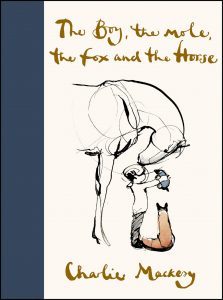
“The Boy, the Mole, the Fox and the Horse” by Charlie Mackesy
It is a rare book that can move a reader to tears, but several people have mentioned that “The Boy, the Mole, the Fox and the Horse” is one of those. Perhaps the “wild” world that the boy is trying to understand and process with the help of his friends resonates with the chaotic world of today’s headlines.
The story starts with a young boy alone and overwhelmed by the big world. He hears a small mole say “hello” and a friendship begins. The mole comments “I’m so small.” And the new friend responds that “yes, but you make a huge difference.” These two explore their world while they share their thoughts.
They see the “wild” woods and imagine how they would feel if they could be less afraid. The mole says, “most of the old moles I know wish they had listened less to their fears and more to their dreams.”
The boy and the mole see a fox caught in a snare in the wild, and decide to help free the fox. The mole naturally fearful of the fox challenges himself to befriend the fox, and chews through the snare. The fox is grateful for the kindness shown to him by his new friends.
The horse is the largest creature they encounter, but also the gentlest. He has more answers for the boy’s questions. “What is the bravest thing you’ve ever said,” asked the boy. “Help,” said the horse. “Sometimes just getting up and carrying on is brave and magnificent.”
British illustrator, Charlie Mackesy has created a small, world in a book filled with the bigger ideas of love and friendship. He suggests that his creation is suitable for anyone from 8 to 80 years old. And, the illustrations are a simple, wonderful way to convey all the important messages between the boy and his friends.
This book would be suitable for anyone seeking encouragement. The idea of living courageously and with kindness is as simple as a boy, a mole, a quiet fox and a gentle horse.
— Reviewed by Lizz Taylor, Poor Richard’s Books
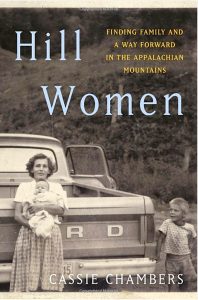
“Hill Women: Finding Family and a Way Forward in the Appalachian Mountains” by Cassie Chambers
Cassie Chambers was raised in Owsley County, Kentucky, the poorest county in the state and the second poorest in the country. Her grandparents were sharecropper farmers, working the land for someone else’s profit, with tobacco and coal being the only way to earn an income.
Chambers speaks of the women role models of her family in this honest and frank memoir. Granny took care of her seven children, the household, administered medical attention and helped in the fields. But Granny valued education, especially for the girls in her family. Chambers believes that might be because the men had alternatives for income, whereas the women had none. The future for women involved years of endless caregiving.
Cassie’s mother, Wilma, was one of the younger of the seven children. An older sister, Ruth, would take Wilma to the bus stop on horseback so that she wouldn’t have to worry about muddy shoes throughout the day. Ruth had given up on education for herself, but was determined to provide for her younger sister so that she could attend school in Berea. Wilma beat the odds and finished school.
The determination of Granny and Aunt Ruth was also felt by young Cassie. Whereas her family sees Berea’s location at the foothills of the Appalachians, Chambers sees Berea as the gateway to the rest of the world. She has a talented school counselor who guides her to Wellesley College. With the support of “hill” women, Cassie graduates from Yale, as well as Harvard Law School. She received a Skadden Fellowship that allowed her to return to Kentucky and provide legal services to the women in Owsley County.
Hill women have been the backbone of Appalachia. They have kept their families together even as the opioid crisis and domestic violence have divided their communities, as well as the nation. Chambers’ story proves the myth of the “hillbilly” and demonstrates the strength of mountain women to pursue a better outcome.
The women in Owsley County raised Chambers, and gave her a future. Now she is determined to help those hardworking women tangled in the legal world find their future.
— Reviewed by Lizz Taylor, Poor Richard’s Books

